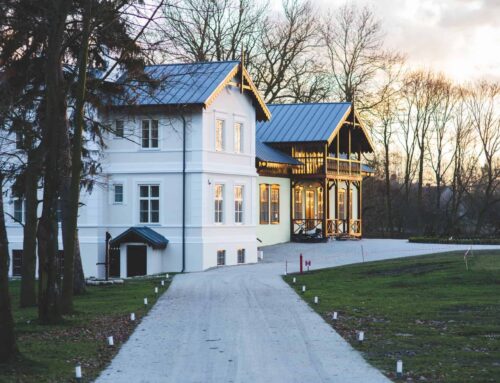San Francisco Real Estate Prices Over the Years from 1980 onwards: A historical look at how real estate prices in San Francisco have evolved over the years
 San Francisco’s real estate market from 1980 onwards is a complex narrative of technological booms, economic cycles, and significant socio-political events. This post delves into the factors that have shaped the trajectory of real estate prices in San Francisco over the past few decades, offering insights into the city’s transformation into one of the most expensive housing markets in the world.
San Francisco’s real estate market from 1980 onwards is a complex narrative of technological booms, economic cycles, and significant socio-political events. This post delves into the factors that have shaped the trajectory of real estate prices in San Francisco over the past few decades, offering insights into the city’s transformation into one of the most expensive housing markets in the world.
The Early 1980s: A Prelude to Growth
The early 1980s in San Francisco were marked by economic recovery and growth following the turbulence of the 1970s. The national economy was recovering from the recession of the early ’80s, and San Francisco began to experience the benefits of this recovery. However, real estate prices remained relatively modest compared to the explosive growth that would characterize later decades. This period laid the groundwork for the city’s burgeoning tech industry and set the stage for the real estate boom to come.
The Dot-Com Boom (Late 1990s to Early 2000s)
The late 1990s heralded the beginning of the dot-com boom, which would have profound implications for San Francisco’s real estate market. As startups flocked to the city and the surrounding Silicon Valley area, the demand for housing surged. The influx of tech workers, coupled with significant investment capital, drove real estate prices to unprecedented levels. However, this rapid growth was not without its challenges. The dot-com bubble burst in the early 2000s, temporarily cooling the real estate market as the tech industry reeled from the impact.
The Mid-2000s: Recovery and Resilience
Following the dot-com bust, San Francisco’s real estate market entered a period of recovery and resilience. The mid-2000s saw a gradual increase in property values, driven by the city’s enduring appeal and the tech industry’s recovery. This period was characterized by a more stable and sustained growth in real estate prices, albeit with the specter of the 2008 financial crisis looming on the horizon.
The 2008 Financial Crisis and Its Aftermath
The 2008 financial crisis and the ensuing Great Recession profoundly impacted real estate markets across the United States, and San Francisco was no exception. Property values in the city dipped as the crisis took its toll on the economy. However, San Francisco’s real estate market proved to be remarkably resilient. The city’s strategic importance as a tech hub helped it recover more quickly than many other areas, with real estate prices rebounding and surpassing pre-crisis levels within a few years.
The Tech Boom 2.0 (2010s Onwards)
The 2010s witnessed the rise of what can be termed the Tech Boom 2.0, with the emergence of social media giants, sharing economy startups, and a new wave of tech innovation. This era further cemented San Francisco’s status as a global tech capital. The demand for housing intensified, driven by a new generation of tech workers and entrepreneurs. Real estate prices soared, reaching new heights and exacerbating the city’s housing affordability crisis. The median home price in San Francisco climbed to over a million dollars, placing homeownership out of reach for many residents.
The Pandemic and Remote Work: A New Chapter
The COVID-19 pandemic introduced unexpected variables into the real estate equation. The initial months of the pandemic saw a softening of the market as uncertainty reigned and the tech industry pivoted to remote work. However, the fundamental appeal of San Francisco, combined with a limited housing supply and the tech industry’s resilience, meant that any downturn was relatively short-lived. The shift towards remote work has also prompted a reevaluation of living and working spaces, with potential long-term implications for the city’s real estate market.
Economic Cycles and the Future
The history of San Francisco’s real estate market since 1980 is a testament to the city’s economic dynamism and ability to adapt to changing circumstances. Each growth phase, from the dot-com booms to the current tech-driven market, has been influenced by broader economic cycles, technological innovation, and significant events.
Looking ahead, San Francisco’s real estate market faces both challenges and opportunities. The ongoing housing affordability crisis, the impact of remote work, and the need for sustainable urban development are vital issues that will shape the future of the market. The city’s ability to navigate these challenges while leveraging its strengths as a global tech hub and cultural center will determine the next chapter in the story of San Francisco’s real estate prices.
As we think back on the past four decades, it is clear that San Francisco’s real estate market is a reflection of the city’s vibrant economy, its status as a center of innovation, and its resilience in the face of adversity. The evolution of real estate prices in San Francisco continues to be a topic of keen interest and debate, embodying the complexities of urban development in the 21st century.
Addressing Affordability and Sustainability
One of the critical issues facing San Francisco’s real estate market is the affordability crisis, which has deepened over the past decade. The city’s desirability and the tech industry’s prosperity have not translated into housing affordability for a significant portion of its population. Initiatives to increase housing supply, reforming zoning laws, and investing in affordable housing projects are crucial steps toward mitigating this issue. Moreover, the sustainability of urban development has come to the forefront, with an increased focus on creating environmentally friendly, resilient communities that can withstand future challenges.
The Role of Policy and Planning
The trajectory of real estate prices in San Francisco underscores the importance of policy and planning in shaping urban housing markets. Decisions regarding land use, public transportation, and housing density profoundly impact affordability, livability, and the overall market dynamics. Engaging in comprehensive planning and policy-making, emphasizing equity and sustainability, will be vital for San Francisco’s future development.
Technological Innovation and the Future of Work
The future of San Francisco’s real estate market is inextricably linked to the tech industry and the evolving nature of work. The pandemic-induced shift towards remote work has prompted a reevaluating of the need for physical office spaces and urban living. However, the city’s role as a hub of innovation and creativity continues to attract individuals and companies alike. Balancing the benefits of remote work with the advantages of in-person collaboration and community will be a key challenge moving forward.
A Look Ahead: Navigating Uncertainties
As San Francisco navigates the post-pandemic world, uncertainties abound. The impacts of remote work, demographic shifts, and economic changes on the real estate market are yet to be fully understood. However, the city’s history of resilience, innovation, and adaptability offers a blueprint for addressing these challenges. By leveraging technology, embracing sustainable development, and prioritizing affordability, San Francisco can thrive as one of the world’s most dynamic urban real estate markets.
In conclusion, the evolution of San Francisco’s real estate prices since 1980 tells a story of remarkable growth, resilience, and challenge. From the dot-com booms to the housing affordability crisis, the market’s fluctuations reflect broader economic trends, technological advances, and policy decisions. As we look to the future, the lessons of the past four decades will be invaluable in guiding San Francisco toward a more equitable, sustainable, and prosperous future. While facing significant challenges, the city’s real estate market remains a barometer of its economic health and societal values, embodying the complexities and opportunities of urban living in the 21st century.




